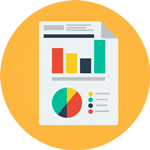 Data analysis has become an integral part of decision-making in many industries today. One of the essential techniques used is correlation testing. These tests help to establish the relationship between different data points and are crucial in understanding the data's behavior. R software is a powerful tool for statistical computing and graphics, widely used in data analysis. We will delve into the process of running such a test using the R software. We will explore the steps involved in installing and preparing the data, performing the correlation test, visualizing the correlation, interpreting the results, checking for statistical significance, and considering the limitations of correlation tests. By following these steps and seeking help from our experienced data analysts can gain valuable insights into the data's behavior and make informed decisions. Whether you are a professional or a beginner in data analysis, understanding how to execute a correlation test in R software is an essential skill that will enhance your analytical capabilities and help you make better decisions based on data.
Data analysis has become an integral part of decision-making in many industries today. One of the essential techniques used is correlation testing. These tests help to establish the relationship between different data points and are crucial in understanding the data's behavior. R software is a powerful tool for statistical computing and graphics, widely used in data analysis. We will delve into the process of running such a test using the R software. We will explore the steps involved in installing and preparing the data, performing the correlation test, visualizing the correlation, interpreting the results, checking for statistical significance, and considering the limitations of correlation tests. By following these steps and seeking help from our experienced data analysts can gain valuable insights into the data's behavior and make informed decisions. Whether you are a professional or a beginner in data analysis, understanding how to execute a correlation test in R software is an essential skill that will enhance your analytical capabilities and help you make better decisions based on data.
The Stages to Follow When Running a Correlation Test;
- Load the Data: You can load your data from a CSV file, Excel file, or any other data source. In R, you can use the read.csv() function to load a CSV file into R, and if your data is in an Excel file, you can use the read_excel() function from the readxl package to load the data.
- Prepare the Data: Before doing a correlation test, you need to ensure that your data is in the correct format; these tests require numerical data, so you need to ensure that your data is numeric. If your data is in a different format, you can use the as.numeric() function to convert it to a numeric format, as well as check for missing values in your data and handle them appropriately.
- Perform the Test: The cor() function calculates the correlation coefficient between two variables, which is a value between -1 and 1, where -1 indicates a perfect negative correlation, 0 indicates no correlation, and 1 indicates a perfect positive correlation.
- Visualize the Correlation: You need to visualize the correlation using a scatter plot, which is a graph that shows the relationship between two variables, showing your understanding of how to run a correlation test in data analysis. In R, you can use the ggplot2 package to create a scatter plot as it provides a wide range of tools for creating high-quality visualizations.
- Interpret the Results: The correlation coefficient indicates the strength and direction of the relationship between the two variables. A positive correlation indicates that as one variable increases, the other variable also increases. A negative correlation indicates that as one variable increases, the other variable decreases. A correlation coefficient of zero indicates that there is no relationship between the two variables.
- Check for Statistical Significance: A correlation coefficient can be statistically significant or not significant; a statistically significant correlation coefficient indicates that the relationship between the two variables is not due to chance. To check for statistical significance, you can use the cor. test() function in R.
- Consider the Limitations: These tests only measure the relationship between two variables and cannot establish causality as well as assume a linear relationship between the two variables, which may not always be the case. Other factors may influence the relationship between the two variables, which may not be captured during the test.
Conducting a correlation test in R is a straightforward process. You need to install R and RStudio, load and prepare the data, perform the test, visualize the correlation, interpret the results, check for statistical significance, and consider the limitations. By following these steps and seeking help from our expert helpers, you can gain valuable insights into
Help with Correlation Tests Using R – Expert's Assistance
 Correlation analysis is a common technique used in data analysis to investigate the relationship between two or more variables. The correlation between two variables can be positive, negative, or zero, and it indicates the degree to which the variables are related. Conducting correlation ordeals is an essential step in understanding the relationship between variables, and R software provides a powerful tool for conducting these tests. We are here to provide an overview of these tests and how they can be performed using R software. We will discuss the purpose of doing a correlation test, the main types of tests under it, and how to choose the best test for your study relating to correlation. Our experts aim to ensure you have a better understanding of how to use the correlation tests and how to use the results to make informed decisions and predictions. Whether you are a researcher, analyst, or student, understanding correlation analysis and how to perform the tests in the R program can be an invaluable skill. With our help, you will be able to analyze your data more effectively and draw meaningful conclusions about the relationship between variables.
Correlation analysis is a common technique used in data analysis to investigate the relationship between two or more variables. The correlation between two variables can be positive, negative, or zero, and it indicates the degree to which the variables are related. Conducting correlation ordeals is an essential step in understanding the relationship between variables, and R software provides a powerful tool for conducting these tests. We are here to provide an overview of these tests and how they can be performed using R software. We will discuss the purpose of doing a correlation test, the main types of tests under it, and how to choose the best test for your study relating to correlation. Our experts aim to ensure you have a better understanding of how to use the correlation tests and how to use the results to make informed decisions and predictions. Whether you are a researcher, analyst, or student, understanding correlation analysis and how to perform the tests in the R program can be an invaluable skill. With our help, you will be able to analyze your data more effectively and draw meaningful conclusions about the relationship between variables.
What is the purpose of conducting a correlation test?
Is the relationship between the two variables positive or negative?
By understanding the relationship between variables, you can make informed decisions and predictions based on the data. For example, if you are studying the relationship between smoking and lung cancer, a correlation test can help you determine the strength of the relationship between these two variables. This information can then be used to inform public health policies and campaigns aimed at reducing smoking rates and preventing lung cancer. Remember, if you need help with correlation tests using R, you can just consult our experts for guidance.
What are the main types of correlation tests?
- Pearson's correlation coefficient: This is the most widely used test and is used to measure the strength and direction of the linear relationship between two continuous variables. The Pearson correlation coefficient can range from -1 to 1, with -1 indicating a perfect negative correlation, 0 indicating no correlation, and 1 indicating a perfect positive correlation.
- Spearman's rank correlation coefficient: This test is used to measure the strength and direction of the monotonic relationship between two variables. These relationships are those in which the variables move together, but not necessarily at a constant rate, which is particularly useful when the data is not normally distributed or contains outliers.
- Kendall's Tau correlation coefficient: This test is also used to measure the strength and direction of the monotonic relationship between two variables. It is similar to Spearman's rank correlation coefficient but is more robust to small sample sizes.
- Point-biserial correlation coefficient: This correlation test is used to measure the strength and direction of the relationship between a continuous variable and a binary variable. For example, you might use this test to determine whether there is a relationship between a person's age and their smoking status.
- Phi coefficient: This test is used to measure the strength and direction of the relationship between two binary variables. For example, you might use this test to determine whether there is a relationship between a person's gender and their smoking status.
How do you choose the best correlation test for your study?
Choosing the best correlation test for your study depends on several factors, including the type of data you have, the research question you are trying to answer, and the assumptions underlying each test. If you need support to choose the best test/s for your study, you can seek help from our professional R experts for hire. Some of the tips to help you with this decision include, the type of data you have will influence which correlation test you should use. For example, if you have two continuous variables, you might use Pearson's correlation coefficient. However, if you have one continuous variable and one binary variable, you might use the point-biserial correlation coefficient instead. The research question you want to answer will also guide your choice of correlation test. For example, if you want to test the hypothesis that two variables are positively correlated, you might use Pearson's correlation coefficient. However, if you want to test the hypothesis that there is a monotonic relationship between two variables, you might use Spearman's rank correlation coefficient. Each test has its own set of assumptions that must be met to provide valid results. For example, Pearson's correlation coefficient assumes that the data is normally distributed and that there is a linear relationship between the variables. Before choosing a test, it is important to check the assumptions of each test and ensure that your data meets those assumptions. R software is a powerful tool for conducting correlation tests, as it provides a wide range of functions and packages for analyzing data. To choose the best test for your study using R, you can use the cor() function to calculate the correlation coefficient between two variables, and the cor.test() function to conduct a hypothesis test of the correlation coefficient.
Correlation tests are an important tool in data analysis that can help you understand the relationship between two or more variables. By conducting these tests, you can determine the strength and direction of the relationship between variables and use this information to make informed decisions and predictions. When choosing a correlation test for your study, it is important to consider the type of data you have, the research question you want to answer, and the assumptions underlying each test. With R software, you can easily calculate and test correlation coefficients and choose the test that best suits your study.


 NB: Sometimes we need to first assess your work to quote accordingly. Equally we may highlight a service input review on your placed order to confirm if the paid amount is
NB: Sometimes we need to first assess your work to quote accordingly. Equally we may highlight a service input review on your placed order to confirm if the paid amount is
